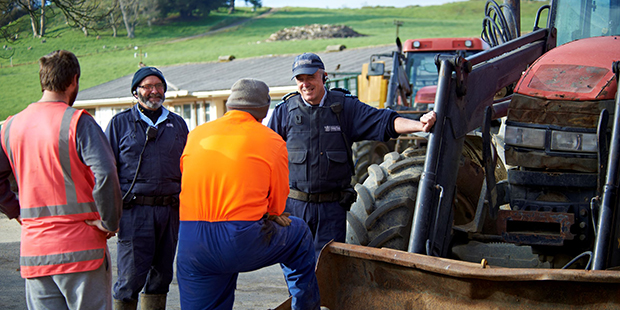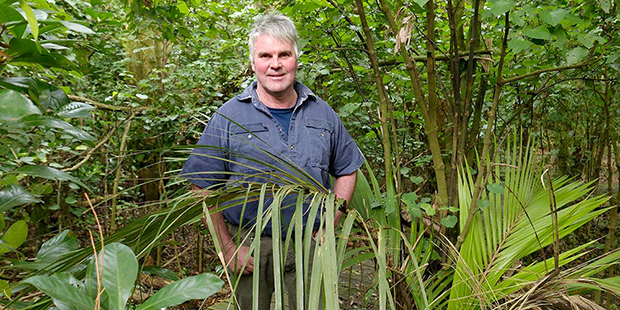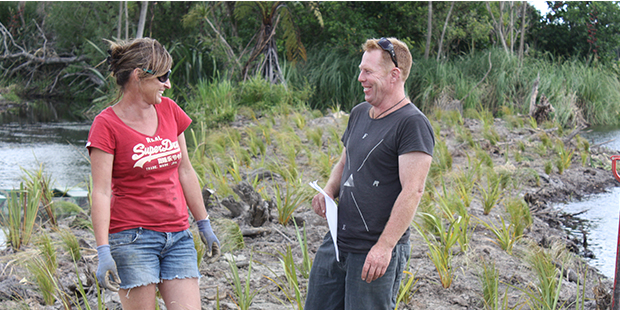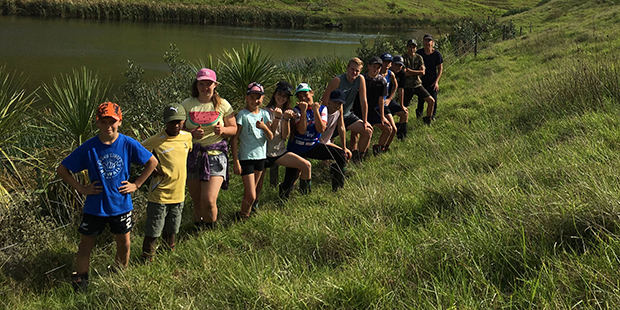Planting trees "an addiction"
Taranaki farm has a lake, boardwalk, growing bird and invertebrate life


Patea dairy farmer Damian Roper comes from a family of sawmillers – but now he and wife Jane are busy planting trees on their 150-hectare dairy farm as part of a wide range of water quality improvement plans.
More than 10 hectares has gone in over the last three years and he plans for many more in the future: “I get a big kick out of it. I’ve always liked trees and before you know it, it’s addictive – you want to learn more.”
He and Jane, originally from South Australia, started at the bottom once they decided to give dairying a go.
“I was shearing sheep in Australia and Jane was pouring beers,” he says. After contract milking, several 50:50 sharemilking jobs in Waverley, South Taranaki, saw them move from one neighbouring farm to another over 19 years. In 2006 they bought their Alton farm, inland from Patea, later adding a neighbouring property and developing it into one operation.
To reduce nutrient run-off, no more than eight millimetres of effluent is applied in bursts of just over an hour to around one third of the farm. Regular spring soil testing means they only apply what fertiliser is required, with phosphate not used since they’ve owned the farm and nitrogen applications reduced from 170 units a hectare to around 115.

Pukatea. Photo / Supplied
Pukatea. Photo / Supplied
“We’re not whacking it on like ice cream over the paddock; we’ve noticed the difference in our bottom line.”
A new one-person 50-bail rotary dairy with in-shed feeding was built in 2015 when they moved there. A feed pad was also put in to reduce wastage from feeding out in the paddock.
Three years ago they took a leap of faith and reduced cow numbers from 500 to 420 taking their stocking rate from 3.2 to 2.8 cows per hectare. Letting their best predominantly Friesian cows really perform saw an increase in production from around 180,000kg milksolids (MS) to a forecast 245,000kg this season.
“It gave us a big surprise,” Roper says. Two years ago they completed a Fonterra Farm Environment Plan, which he admitted was a bit daunting to start with.
“We didn’t leave a stone unturned,” he says. “It really showed where our strengths were as well as a few areas where we could do better.”
A further 6ha of planting is planned for this year. Roper now runs his own small propagation unit, growing appropriately eco-sourced species such as flax, cabbage trees, carex, kahikatea, tawa, pukatea and the rare swamp maire.
The plan is treated as a living document and is constantly revisited. “We want to be more than compliant,” he says. “It’s not hard and it’s not expensive. It’s not difficult to put up a three-wire fence.”
They classified different areas of the farm with steep faces and rougher areas grazed by their 60 beef cattle being gradually retired.

Damian & Jane Roper, 2019 Responsible Dairying Awards winners. Photo / Supplied
Damian & Jane Roper, 2019 Responsible Dairying Awards winners. Photo / Supplied
They’ve worked with the Taranaki Regional Council to restore a storm damaged block of bush by their house, which can be admired from a boardwalk being built by their children Jack, Harriet and Adelaide. Ropers Bush is now classed as a Key Native Ecosystem and will be protected under a QEII Trust covenant.
They’ve also created a 2.5ha lake from an ugly, swampy area which Damian says is now coming into its own after five years, regenerating to its natural state.
An independent ecologist monitors water quality and carries out invertebrate counts which show water boatmen numbers have exploded. Care has also been taken to provide the right environment for eels and koura by planting the perimeter with overhanging species and lining the pond edges with rocks.
Birdlife has increased with teal coming back and there’s now watercress growing along springs feeding the lake.
Last year they were the winners of the Fonterra Responsible Dairying Award and received the John Wilson Memorial Trophy, recognising leadership in sustainable dairying. Now they plan to invite Ngati Ruanui to undertake water quality ecology studies on the farm as well as looking at planting a reed, once common in the area, which was used in whare making. Local schools will also be invited to get involved.
Their new farm, which backs on to Whanganui National Park, will be largely planted in manuka and rewarewa to earn a future income from carbon farming. There’s also the potential to establish a cycle track.
“It’s a beautiful part of the world,” he says, “that New Zealanders should see.”






